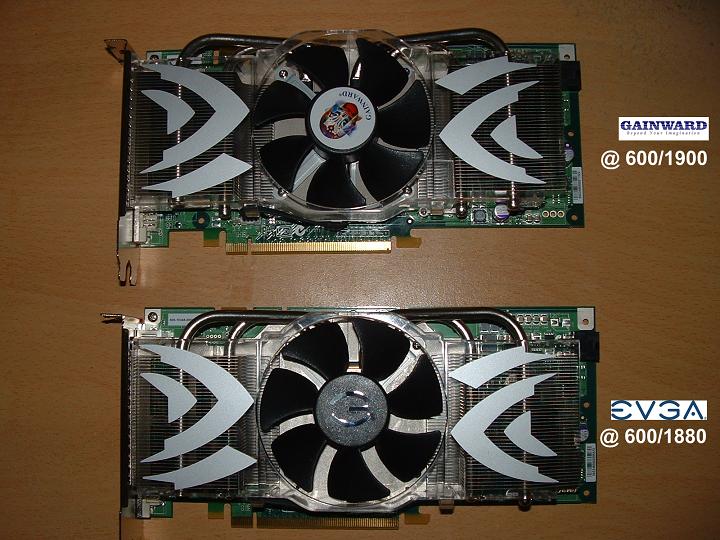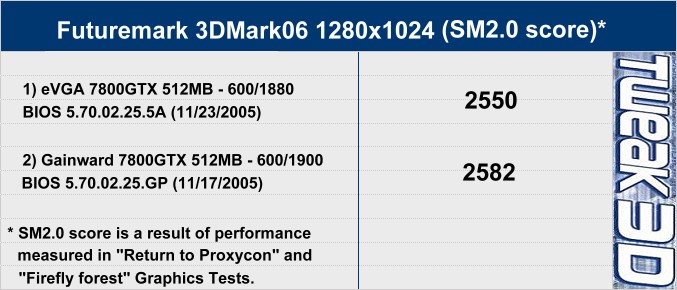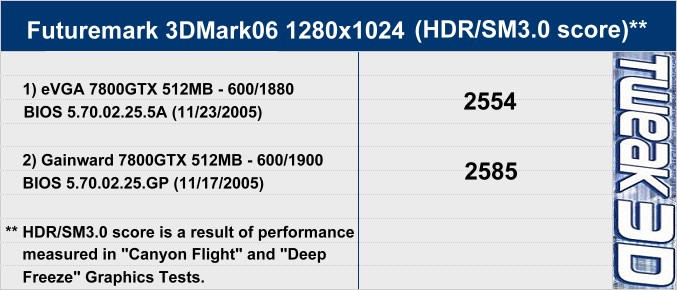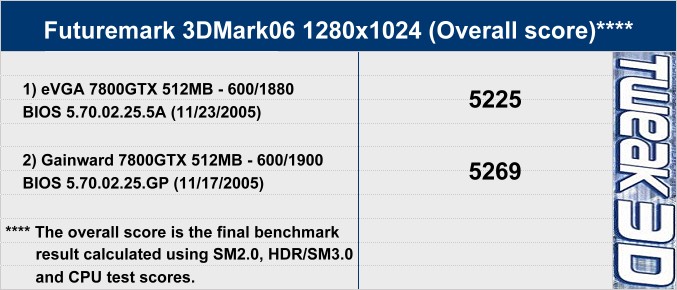|


Benchmarking this new beast
As with such a demanding array of 3D eye candy, one really should test it out with the best currently available consumer level graphics cards. Confident this theory is nothing short of excellent, we took liberty bringing in two of the best boys in town – eVGA and Gainward. Both observed as long time favourites between enthusiasts with desire in fine tuning their products for added performance, who better to execute this demanding job. With our plan set, we quickly got our hands on two Nvidia 7800 GTX chipset 512MB graphics cards from either camp, grabbed a coffee and sat down to have a long play with each. It is at this point we discovered eVGA sent us a sample clocked at 600/1800 and Gainward 580/1760, both up from the default Nvidia 550/1700 7800GTX 512 reference design. Confident this could be bested we drank more coffee until without volt modding achieved 600/1900 on the Gainward and 600/1880 on the eVGA. These increases represent 9% more on GPU frequency and 11.7%/10.6% for the memory respectively. This is more impressive considering the Gainward isn't from the famous "Golden Sample" series. The BIOS for both cards was 5.70.02.25.5A dated November 23rd 2005 (eVGA) and 5.70.02.25.GP dated November 17th 2005 (Gainward). Armed with such might it was natural progression to commence with benchmarking.

Test setup
Processor: AMD Athlon 64 FX-55 @ 2600MHz
Operating System: Windows XP Professional SP2 (32 bit)
Memory: 1GB (2 x 512MB) Crucial Ballistix PC3200 (2-2-2-5)
Graphics card: Gainward 7800 GTX 512MB, 81.98 version driver
Graphics card: eVGA 7800 GTX 512MB, 81.98 version driver
Motherboard: DFI Lan Party UT NF4 Expert (NVIDIA nForce4 SLI chipset)
Power Supply: Akasa PowerPlus 650W ATX 2.01

Benchmark results




Results analysis
3DMark06 is by every stretch of one's imagination a hardware intensive beast to feed, so much so that this same setup scores over 10,000 in 3DMark05. The fact we used a single core processor brought the final score down somewhat given how now 3DMark06 takes into account CPU performance as gauged from the CPU Tests. Despite this, a score above 5000 is nothing to be ashamed off and is equal to labelling one's system as kickass, willing and able to take on the latest games and then some more. In comparison, a similar system albeit with a dual core processor scoring around 2000 CPU Marks would yield a final benchmark score of 6188, we may predict this via plugging in the new value into the final score formula. Granted not all Nvidia 7800GTX 512 based cards will overclock to 600/1900 (core/memory), occasions like these do remind us of the 3D horsepower available providing of course one matches it (or two in SLI) with an equally capable CPU. This is even truer now that Nvidia have released SMP (Symmetrical Multi-processing) aware drivers benefiting those with dual core processors and of course let us not forget specific SMP patches, which extend this joy further such as in Quake 4. The unfortunate truth is that we rarely utilise all the power locked within modern GPU's (including these 7800GTX 512's), remember a slow processor with an ultra fast graphics card will create a bottleneck. If you want your system to rock your world and amaze others then don't forget this golden rule.
Next Page: Conclusion
|








